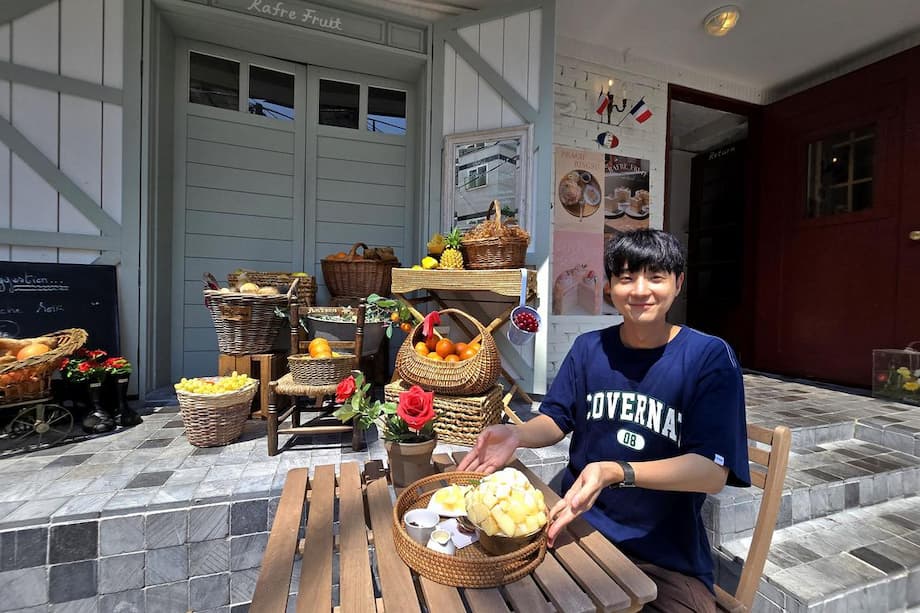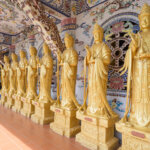South Korea’s Bingsu Craze Meets Soaring Prices
In the sweltering heat of a Korean summer, few treats are as beloved as bingsu—a mountain of finely shaved ice crowned with sweet toppings like fruit, red beans, condensed milk, and ice cream. But this year, the price of bingsu has soared to unprecedented heights, with some luxury hotel versions fetching up to 150,000 won (about $108–$150). The phenomenon has become so pronounced that locals have coined a new term: ‘bingsu-flation’.
- South Korea’s Bingsu Craze Meets Soaring Prices
- What Is Bingsu and Why Is It So Popular?
- How Much Does Bingsu Cost in 2024?
- Why Are Bingsu Prices Rising So Fast?
- How Does Bingsu Compare to Other Foods Amid Inflation?
- Why Are Fruits So Expensive in Korea?
- How Are Businesses and Consumers Adapting?
- What Does ‘Bingsu-flation’ Say About Korean Society?
- In Summary
While Singaporeans might pay around $3 for a similar ice kacang, South Koreans are now shelling out 30 to 50 times more for premium bingsu. Despite the sticker shock, the dessert’s popularity shows no sign of melting away. What’s driving these sky-high prices, and why are people still lining up for a bowl? The answer lies at the intersection of inflation, luxury culture, and shifting consumer habits in South Korea.
What Is Bingsu and Why Is It So Popular?
Bingsu (빙수) is a traditional Korean dessert that has evolved from humble beginnings into a symbol of indulgence. Traditionally, it consisted of shaved ice topped with sweetened red beans, rice cakes, and fruit. Over the years, bingsu has become a canvas for culinary creativity, with modern versions featuring everything from mango and truffle to edible gold leaf.
The dessert’s popularity peaks in summer, when Koreans seek relief from the heat. Bingsu is not just a treat—it’s a social ritual, often shared among friends or family at cafes and hotels. Its Instagram-worthy presentation and association with “small luxuries” have only fueled its appeal, especially among younger generations seeking memorable experiences.
How Much Does Bingsu Cost in 2024?
The price of bingsu varies dramatically depending on where you buy it. At local cafes and chains, a bowl might cost between 7,000 and 14,000 won ($5–$10). But at luxury hotels in Seoul, prices have reached jaw-dropping levels:
- InterContinental Grand Seoul Parnas: 150,000 won for a champagne-infused bingsu, created in collaboration with French champagne house Perrier-Jouet.
- Four Seasons Hotel Seoul: 149,000 won for a Jeju apple mango bingsu, topped with rare fruit and premium ingredients.
- Signiel Seoul: 130,000 won for a signature mango bingsu, crafted under the guidance of a Michelin-starred French chef.
- The Shilla Seoul: 102,000 won for a mango bingsu, and 60,000 won for a black truffle ice cream bingsu made with royal-grade rice and dessert wine.
Even at more accessible chains like A Twosome Place or Angelinus, prices have crept up. A Twosome Place’s red bean bingsu now costs 12,000 won, up 1,000 won from last year, while their apple mango bingsu is 14,000 won. Angelinus offers peach bingsu for 14,000 won, up from 12,000 won the previous year.
Why Are Bingsu Prices Rising So Fast?
The surge in bingsu prices is the result of several converging factors:
1. Ingredient Inflation
Key ingredients for bingsu—especially fruit, red beans, and milk—have seen sharp price increases. For example, the wholesale price of Korean red beans rose nearly 15% in 2024 compared to the previous year. Milk prices jumped by over 13% in the first quarter of 2024. Mangoes, particularly the prized Jeju apple mango, have become luxury items in their own right, with prices for domestically grown mangoes up 40% year-on-year.
Even watermelon, another popular bingsu topping, has not been spared. The average retail price of a watermelon in Seoul surpassed 30,000 won this summer, nearly 40% higher than last year, due to prolonged heat waves and supply shortages.
2. Labor and Production Costs
Unlike mass-produced desserts, premium bingsu is often made to order, requiring skilled staff and elaborate presentation. Labor costs have risen alongside ingredient prices, especially as hotels compete to offer unique, Instagrammable experiences. Some hotels even grate fresh truffle onto bingsu at the table or use imported cheeses and wines as toppings.
3. The ‘Small Luxury’ Trend
Despite economic uncertainty and rising living costs, many Koreans are willing to splurge on affordable luxuries. Economists call this the ‘lipstick effect’: when times are tough, consumers cut back on big-ticket items but continue to indulge in small treats that offer comfort or status. Bingsu, with its seasonal appeal and social cachet, fits this trend perfectly.
Hotel lounges and bakeries have become popular venues for celebrations, birthdays, and anniversaries, as people seek experiences that feel special without the commitment of a major purchase. The demand for ultra-premium bingsu continues to grow, even as prices climb.
4. Social Media and the ‘Experience Economy’
Luxury bingsu is as much about the spectacle as the taste. Hotels compete to outdo each other with ever more extravagant creations—think edible gold leaf, molecular gastronomy, and imported truffles. These desserts are designed to be photographed and shared online, turning a bowl of shaved ice into a viral status symbol.
As one hotel official explained, the goal is to deliver a “multi-sensory gastronomic experience” that goes beyond mere refreshment. For many young Koreans, the chance to try—and post about—a $100 bingsu is an experience worth paying for.
How Does Bingsu Compare to Other Foods Amid Inflation?
Bingsu is not the only food affected by South Korea’s inflationary pressures. Prices for everyday staples like instant noodles, milk, beer, and burgers have all risen in recent years. Since 2021, daily necessities have increased in price by 19.1%, outpacing the overall inflation rate of 15.9%. Processed food costs are a key driver of this trend.
For lower-income households, the squeeze is especially acute. Families in the bottom 20% income bracket now spend nearly 39% more on food than they did five years ago. As a result, many consumers are turning to ultra-cheap convenience store meals and budget-friendly options to balance their budgets.
Yet, the willingness to pay for luxury bingsu highlights a paradox: while many cut back on essentials, demand for premium experiences remains strong among those who can afford them. This divide is emblematic of broader trends in South Korean society, where luxury consumption and social inequality often coexist.
Why Are Fruits So Expensive in Korea?
One reason for the high cost of bingsu is the price of fruit in Korea. Unlike in many countries where fruit is cheap and plentiful, Korean fruit is considered a luxury item. Limited arable land, high production costs, reliance on imports, and multiple layers of distribution all contribute to elevated prices. For example, apples and tangerines can cost three times more than in the US, and premium fruit gift sets are a common (and expensive) tradition for holidays and special occasions.
This culture of valuing fruit as a luxury has spilled over into the dessert world, where bingsu topped with rare or imported fruit commands a premium. The use of Jeju apple mango, in particular, has become a status symbol, driving up both demand and prices.
How Are Businesses and Consumers Adapting?
Not all bingsu is created equal, and not everyone is willing—or able—to pay hotel prices. Many cafes and dessert chains are focusing on ingredient quality and creative toppings to offer more affordable versions. Some consumers are even making bingsu at home, using store-bought ice shavers and fresh fruit to recreate the experience for a fraction of the cost.
Convenience stores and budget cafes have also introduced single-serving bingsu and seasonal fruit drinks to cater to price-sensitive customers. These options typically cost under 10,000 won, making them accessible to a wider audience.
Meanwhile, the luxury segment continues to innovate, with hotels unveiling new flavors and collaborations each summer. The competition among high-end hotels has become a seasonal spectacle, with each establishment vying for the title of “most extravagant bingsu.”
What Does ‘Bingsu-flation’ Say About Korean Society?
The rise of ‘bingsu-flation’ is about more than just dessert—it reflects deeper currents in South Korean society. On one hand, it highlights the country’s love of culinary innovation and willingness to embrace global trends. On the other, it exposes the growing gap between those who can afford luxury experiences and those who cannot.
The phenomenon also underscores the resilience of the “experience economy,” where consumers prioritize memorable moments and social media-worthy experiences over material goods. For many, a bowl of luxury bingsu is not just a treat, but a statement—a way to participate in a cultural trend, even if only once.
In Summary
- Bingsu prices in South Korea have surged, with luxury hotel versions reaching up to 150,000 won ($108–$150) per bowl.
- Rising ingredient costs, especially for fruit, milk, and red beans, are a major driver of ‘bingsu-flation.’
- Labor costs, premiumization, and the pursuit of “small luxuries” have fueled demand for high-end bingsu despite economic uncertainty.
- Social media and the experience economy have turned bingsu into a status symbol and viral trend.
- While luxury bingsu thrives, many consumers are seeking affordable alternatives or making bingsu at home.
- The phenomenon reflects broader trends in Korean society, including inflation, luxury consumption, and social inequality.




